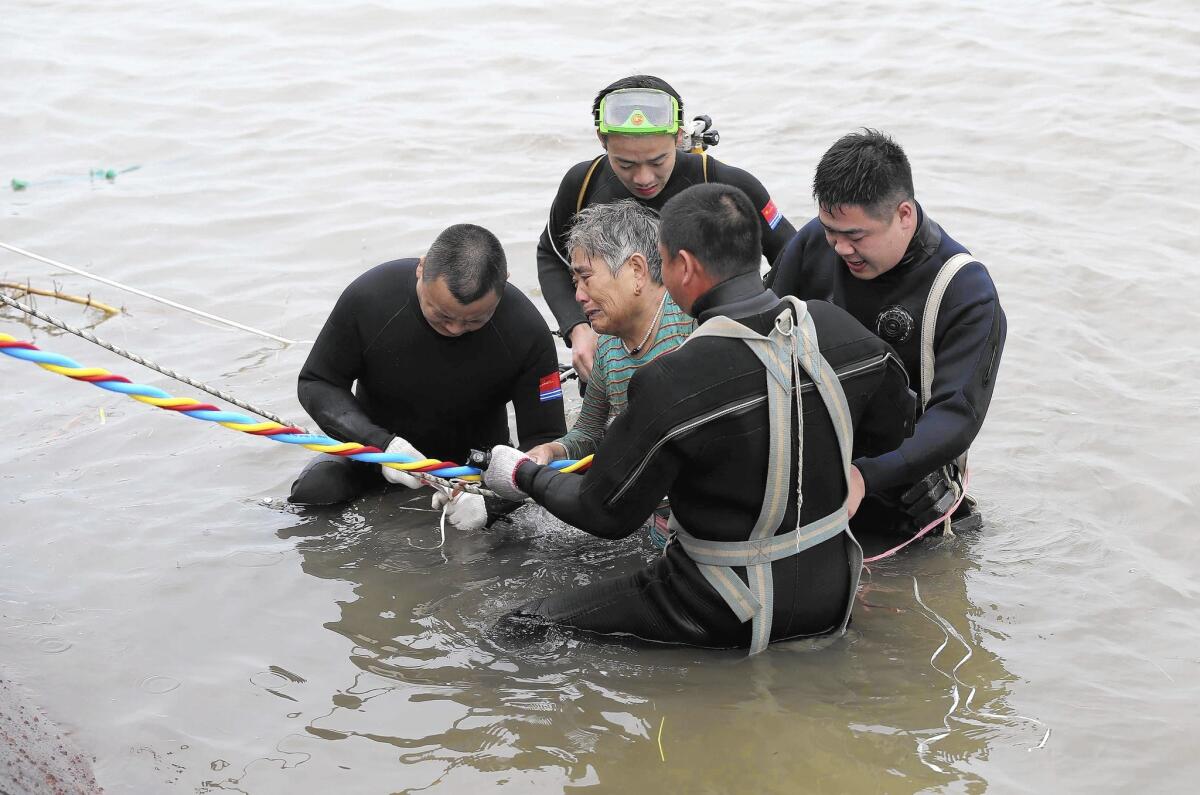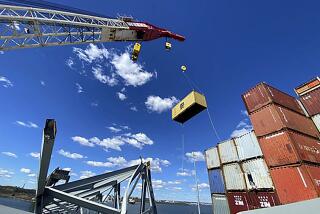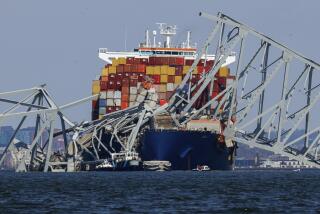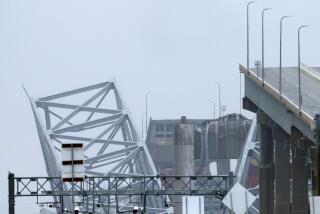China rescue efforts yield few survivors from capsized ship

With hope fading Wednesday for finding survivors of a capsized cruise ship on the Yangtze River, Chinese rescue workers were devising plans to lift the boat out of the water and either cut into the hull or try to right the vessel.
Heavy rain overnight hampered efforts to locate survivors among the more than 430 people still believed to be trapped in the ship, which went down Monday night amid bad weather.
More than 200 divers were participating in the search, and as of Wednesday morning, only 14 of the 456 people aboard were known to have survived; five were confirmed dead. Twelve of the survivors were rescued from the water, and two were pulled from the hull.
Chinese authorities were strictly limiting media access to the site of the submerged ship, with only reporters from the state-run New China News Agency and state-run CCTV allowed anywhere near the rescue operations. A team of 4,000, including police officers, firefighters and soldiers, was said to be involved in the rescue mission.
Meanwhile, distraught families gathered at a tour agency in Shanghai that had arranged trips for some of those on board, seeking information about their relatives. Several raised questions about why the vessel was sailing in such inclement weather, and why the captain failed to issue a distress signal but managed to swim to safety.
With no survivors found since Tuesday afternoon, the death toll looked likely to surpass last year’s ferry disaster in South Korea that killed 304 people.
The ship, called the Dongfangzhixing, or Eastern Star, was traveling on a 930-mile route from the eastern city of Nanjing to the southern metropolis of Chongqing when it sank about 9:30 p.m. Monday. State-run media initially said the ship was carrying 458 people: 406 passengers, five tour guides and 47 crew members.
Most of the passengers were tourists between the ages of 50 and 80, although there was one as young as 3.
According to a statement from the local government, crew members called for help about 11:50 p.m. after swimming to shore, more than two hours after the boat sank. State media did not explain the delay.
Zhang Hui spent the night drifting in the river before he was found Tuesday. Many of the passengers had already gone to bed when rain began pouring down and lightning streaked across the sky, the 43-year-old tour guide said in an interview with the state-run news agency.
As the ship started listing in the storm, Zhang grabbed a life jacket but had no time to put it on before the vessel capsized. He can’t swim, so he clutched the jacket to stay afloat, he said.
At first, he could see about a dozen people in the river yelling for help. But as the hours passed, the voices faded away.
“The raindrops hitting my face felt like hailstones,” he recalled. “Just hang in there a little longer, I told myself.”
As dawn approached, Zhang saw land and was able to drag himself ashore, where he was found and taken to hospital.
“Life jackets are accessible in all of the cruise’s cabins. If it had not happened so fast, a lot of people could’ve been saved,” a sobbing Zhang said from his hospital bed.
At Xiehe Travel, the Shanghai tour agency that handled some of the cruise bookings, a company representative contacted by the Los Angeles Times refused to comment on the incident.
“I’m very, very sad,” said Qu Qing, a woman from Changzhou city, in Jiangsu province, who had six family members on board, all in their 60s and 70s. “My father, his three younger sisters and one younger brother [and] my mother boarded on May 28 in Nanjing. They saw a travel ad in the local newspaper, then they contacted the travel agency and went. My father was so happy.
“We can’t accept this as reality,” she continued, sobbing. “All of our relatives are trying to find information on the Internet. We learned that the authorities in Nanjing and Shanghai were consoling the families, so I went with my uncle and my uncle-in-law … to the Changzhou Tourism Bureau, but we were treated terribly. We had to take instant cardio-reliever pills to pull through it.”
The ship’s captain and chief engineer, both of whom made it to shore, said the vessel sank quickly after getting caught in a cyclone, according to the news agency. Both were taken into police custody.
The sinking happened in the Damazhou waterway section of the Yangtze, the world’s third-longest river. The section has a depth of about 50 feet, according to the news agency, and in pictures posted online, the hull was visible just above the water’s surface.
According to state media, President Xi Jinping “issued important instructions immediately,” dispatching a major search-and-rescue effort to the scene in Hubei province. Premier Li Keqiang arrived there by midday Tuesday, observed the rescue effort from a boat and visited survivors who were hospitalized.
The ship was owned by the state-run Chongqing Eastern Shipping Corp. Rescuers told the New China News Agency that it was “not overloaded” and was “equipped with sufficient life jackets” when it sank.
“Our bosses have gone to the site,” said a Chongqing Eastern employee reached by phone Tuesday. “But the place is sealed, so we don’t have any updates yet. Right now our superiors are trying to console the crew’s family members.”
The employee, who said he worked in the company’s finance department, declined to give his name.
The People’s Daily, a Communist Party mouthpiece, said the ship went down in about two minutes amid 40-mph winds and drifted for about two miles before coming to a rest.
The news portal Sina compiled a short missing-persons report Tuesday. Many of the posts were by children and grandchildren of the passengers, who had spent the morning anxiously trying to call those on the boat.
“Zhang Yuming, male, born in 1952, father of Weibo user ‘HappyBrother23,’” said one relative, referring to his user name on China’s most popular microblog. “HappyBrother23’s father and brother-in-law departed together from the gate of the Shanghai Grand Theater at 7 a.m. on May 28, and then took a bus to Nanjing to get on the boat.”
“Hu Xiufang, female, 65 years old, of Jiangsu province,” said another. “Seven or eight members of the same family were on board.”
And a third: “Wang Chuanyu, male, 65 years old … His friend Luo Jigang suggested that they travel to Chongqing for fun. The price wasn’t high — just over 2,000 yuan [$322] — and the original plan was to travel for half a month. Last night at 8:00, my father spoke with our family by phone. I tried to reach my father this morning, and his phone isn’t connecting.”
Boat accidents on the Yangtze have been common in recent years.
In January, a tugboat sank in Jiangsu province, killing 22 of the 25 people on board, including eight foreigners. In May 2013, three people died near Yibin, in Sichuan province, when a boat overturned. Two accidents in 2012 — one in Anhui province and another in Jiangsu — left 13 people dead.
Makinen reported from Beijing and Kaiman from Bangkok, Thailand. Nicole Liu in The Times’ Beijing bureau contributed to this report.
More to Read
Start your day right
Sign up for Essential California for news, features and recommendations from the L.A. Times and beyond in your inbox six days a week.
You may occasionally receive promotional content from the Los Angeles Times.







